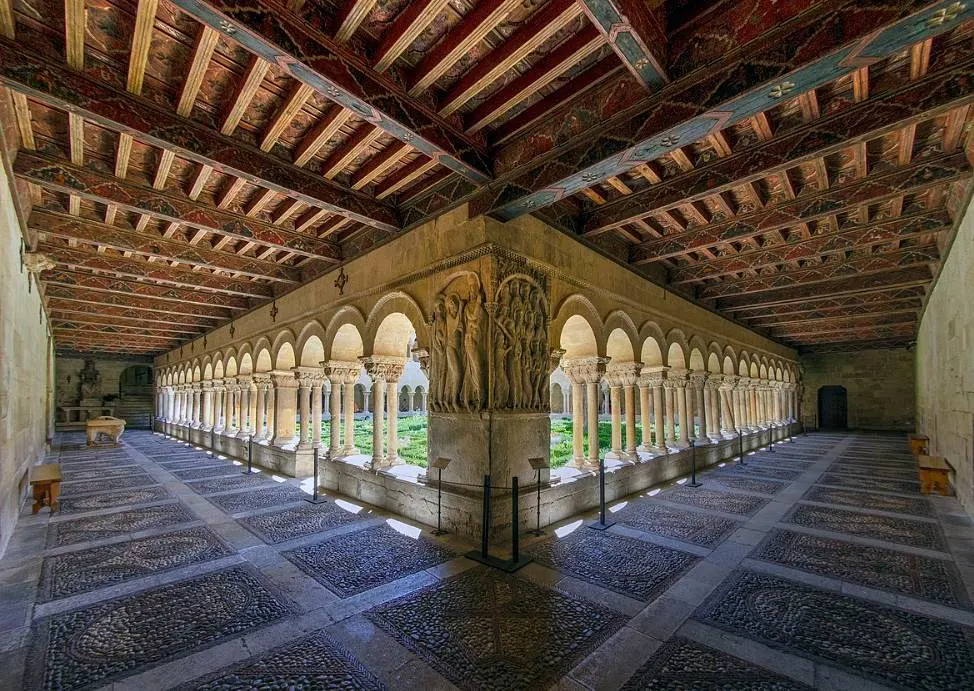I’m always fascinated by architecture that has withstood the test of time for multiple centuries. This monastery in Spain is definitely a prime example of this.
Located in a small village in northern Spain, the Abbey of Santo Domingo de Silos is one of the most fascinating Romanesque buildings in Europe.
Not only does this famous abbey feature some remarkable medieval artifacts, but it also contains some of the ultimate masterpieces of Romanesque art.
In this article, you’ll discover some of the most interesting facts about the Abbey of Santo Domingo de Silos.
1. It’s located in a village in the Burgos Province of northern Spain
The Abbey of Santo Domingo de Silos is located in the small village of the same name in Northern Spain.
It’s situated within the Burgos Province and saying that this is the middle of nowhere is not an exaggeration.
The closest major city is the provincial capital Burgos which is about 50 kilometers (30 miles) to the northwest of the village.
Santo Domino de Silos is located approximately in between the major cities of Bilbao on Spain’s northern coastline and Madrid in the heart of the country.

2. There has been a monastery in this location since the 7th century
What’s fascinating about this 11th-century Benedictine monastery is that there has been an abbey in this location since the 7th century.

This was a period in history when the Visigoths, a Germanic people, still ruled this part of Europe before the Muslim Conquest of the Iberian Peninsula.
Toledo was the main city in Span during this period and the abbey was referred to as “San Sebastián de Silos” back then.

3. It was renamed in the 11th century to commemorate s a Spanish monk
The name of both the village and the monastery is a reference to Dominic of Silos (1000-1073 A.D.), a Spanish monk who became the monastery’s abbot.
He was commissioned to renovate the monastery in the 11th century by Fernando the Great, King of Castile and León.
He had been prior of the Monasteries of San Millán de la Cogolla, not too far to the northeast. He was driven out by the local ruler, King García Sánchez III of Navarre because he refused to give up his land.
Dominic of Silos is a Catholic saint and both the church and monastery were renamed in his honor in 1085.
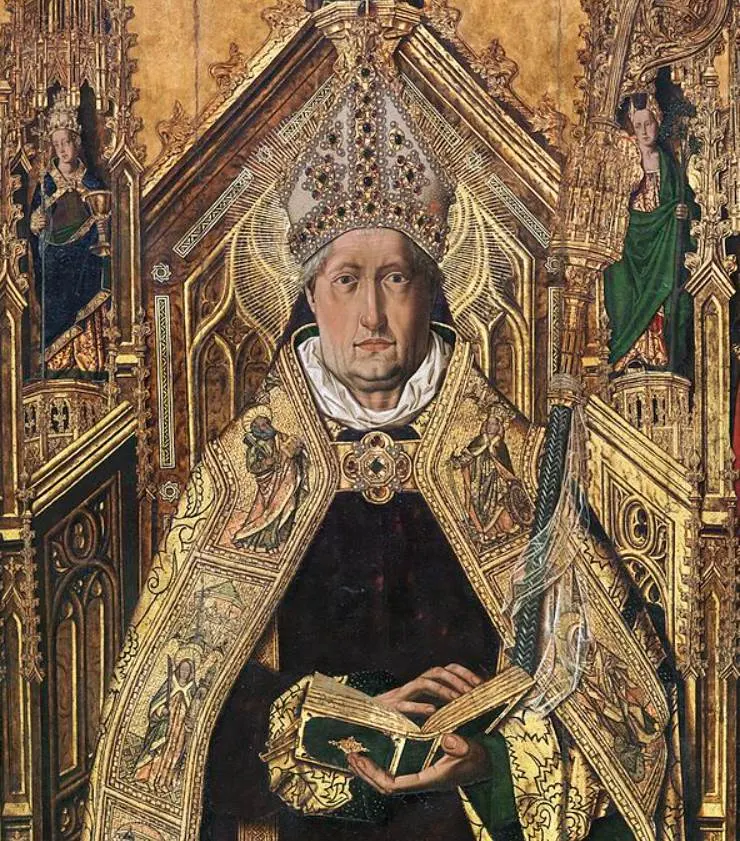
4. The monastery features 2 stories and was completed in the 12th century
When Dominic of Silos arrived at the dilapidated Abbey of St. Sebastian, only 6 monks lived there. With the help of King Ferdinand the Great, he started a renovation and expansion program.
The cloister of the monastery is the oldest part that has survived since this project was started in the final quarter of the 12th century.
The first floor wasn’t completed until the second half of the 12th century, although the monastery had been dedicated much earlier in 1088.
The cloister is lined with rows of columns and 16 semi-circular arches on the north and south sides and 14 semi-circular arches on the west and east sides.
The second story was completed in the 12th century as well and was constructed on top of the wooden vaulting of the lower section.
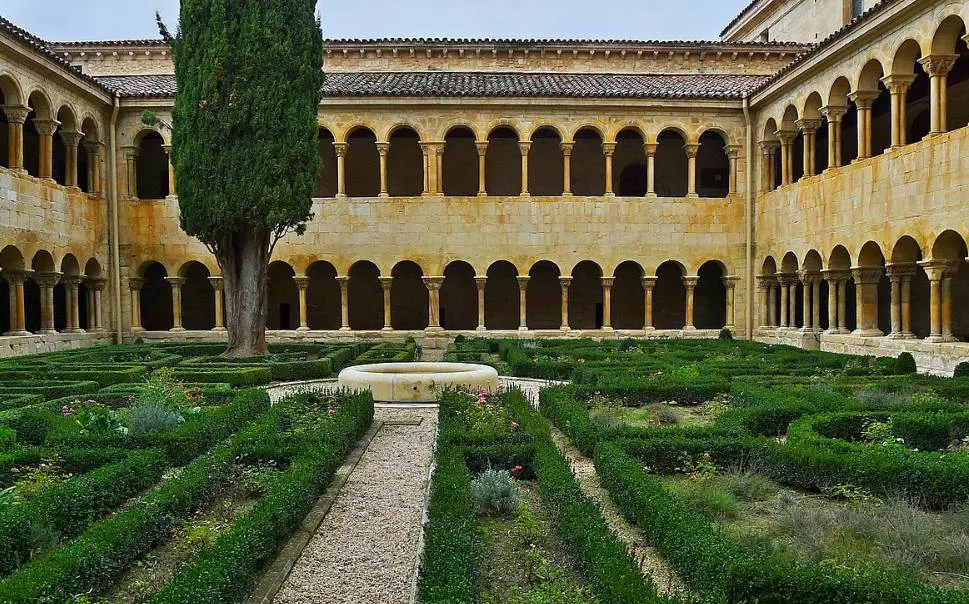
5. The monastery’s church was redesigned by an 18th-century Neoclassical architect
The design of the church and monastery is quite peculiar because they are intertwined.
The church was designed to feature a central nave and two side aisles, but the right aisle is occupied by the left arcade of the cloister.
The central nave of the church leads up to the apse that features 5 small chapels. The building was crumbling and rebuilt by the 18th-century Neoclassical architect Ventura Rodríguez (1717-1785).
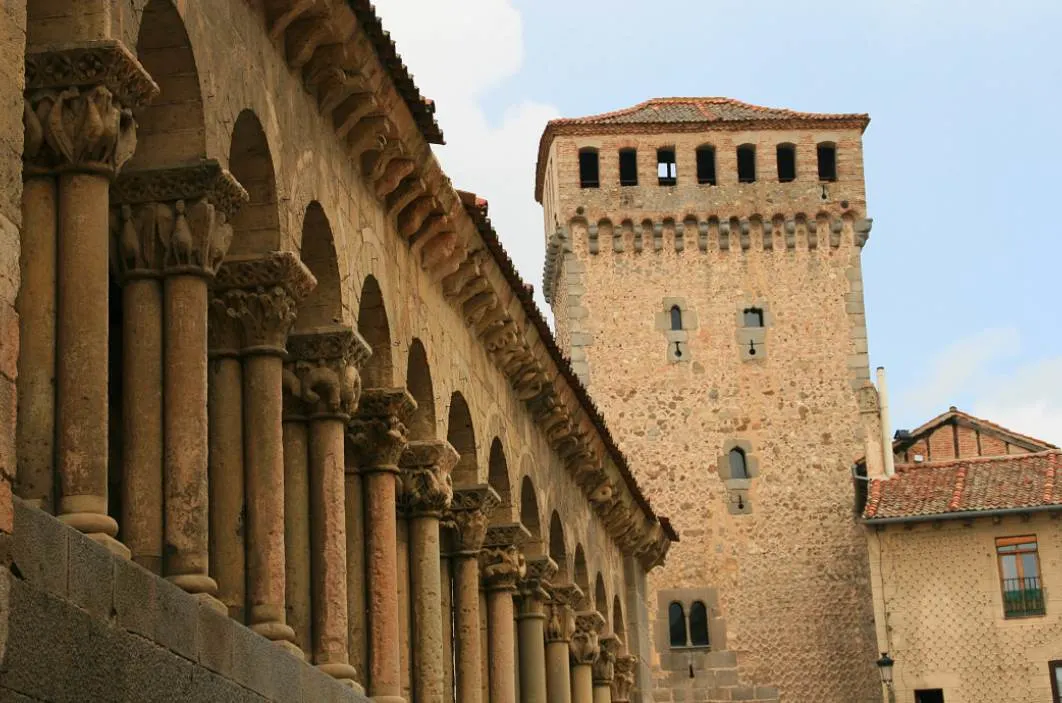
6. The cloister features arcades that are supported by twisted columns
The monastery’s cloister is the oldest and most fascinating attraction of the abbey. It features piers in all 4 corners that are decorated with relief panels.
These are square piers that are very robust, a typical feature of Romanesque architecture.
These piers are adjoined by smaller columns and a group of 4 twisted columns in the central part of each arcade to provide further support.
The capitals of all columns are carved by master sculptors and are some of the most remarkable Romanesque artworks in Europe.
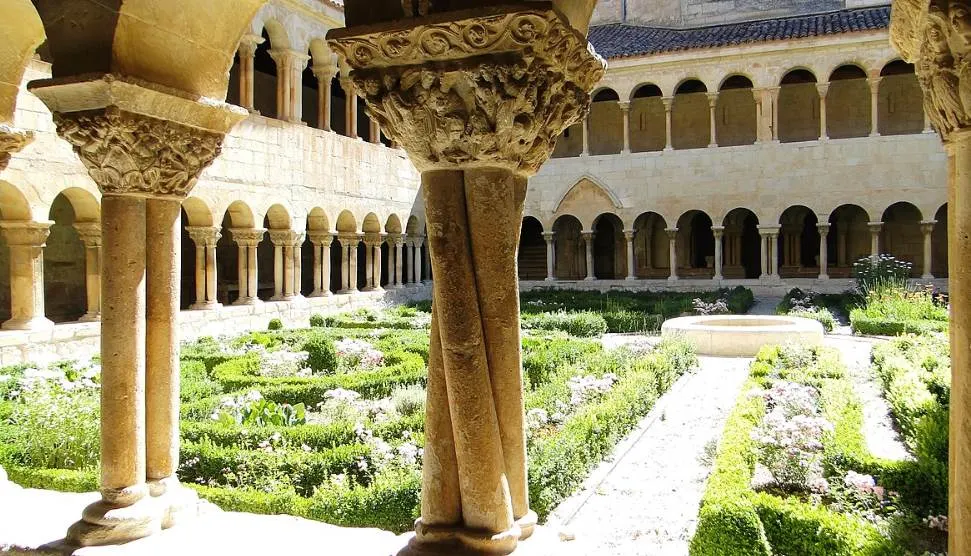
7. The pier reliefs depict various scenes that are popular in Christian art
The most impressive artworks are the carved relief panels that decorate each corner of the cloister’s arcades.
These carvings were added at a later date and are believed to have been completed by the middle of the 12th century. The 4 piers depict the following scenes:
- Southeast corner’s pier – The Ascension and the Pentecost
- Northeast corner’s pier – The Entombment and the Descent from the Cross
- Northwest corner’s pier – The disciples of Emmaus
- Southwest corner’s pier – The Annunciation to Mary and the Tree of Jesse.
It’s likely that the same sculptor completed all reliefs at the Abbey of Santo Domingo de Silos and that this man also completed the reliefs at the Moissac Abbey in southwestern France.

8. The monastery’s library houses the oldest document on paper in Europe
The Silos Library was one of the most important libraries on the Iberian Peninsula for many centuries.
Together with the Library of the Toledo Cathedral, It held the most important manuscripts of the Mozarabic rite, the main liturgical rite in medieval Spain.
Although many of these manuscripts were sold in the 19th century, it still holds the so-called “Missal of Silos.”
This is the oldest manuscript in Europe on paper as it dates back to before 1080, possibly when Dominic of Silos was still living here!
